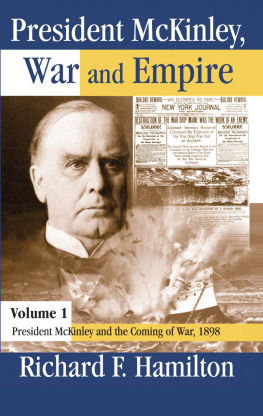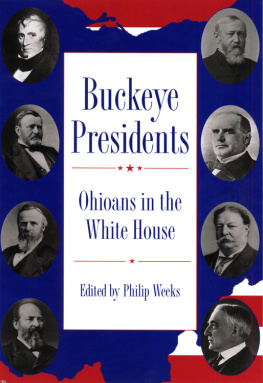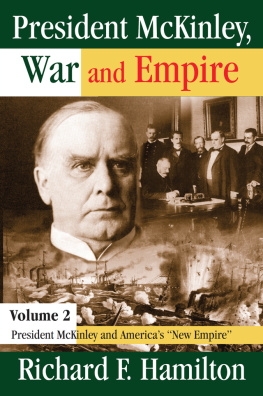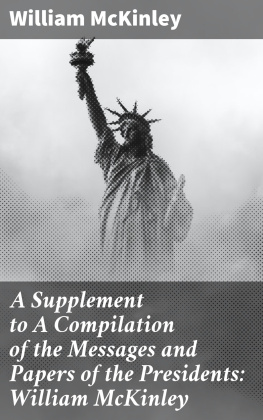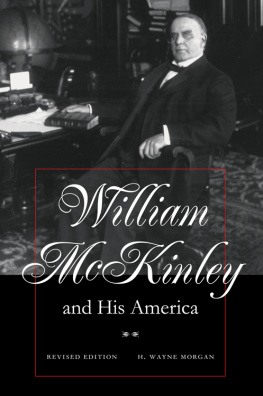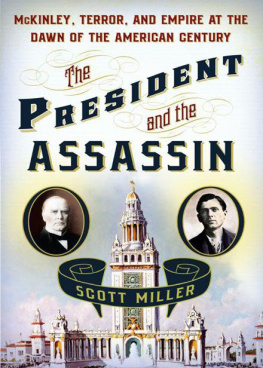Thank you for downloading this Simon & Schuster ebook.
Get a FREE ebook when you join our mailing list. Plus, get updates on new releases, deals, recommended reads, and more from Simon & Schuster. Click below to sign up and see terms and conditions.
CLICK HERE TO SIGN UP
Already a subscriber? Provide your email again so we can register this ebook and send you more of what you like to read. You will continue to receive exclusive offers in your inbox.
We hope you enjoyed reading this Simon & Schuster ebook.
Get a FREE ebook when you join our mailing list. Plus, get updates on new releases, deals, recommended reads, and more from Simon & Schuster. Click below to sign up and see terms and conditions.
CLICK HERE TO SIGN UP
Already a subscriber? Provide your email again so we can register this ebook and send you more of what you like to read. You will continue to receive exclusive offers in your inbox.
ALSO BY ROBERT W. MERRY
Where They Stand: The American Presidents in the Eyes of Voters and Historians
A Country of Vast Designs: James K. Polk, the Mexican War and the Conquest of the American Continent
Sands of Empire: Missionary Zeal, American Foreign Policy, and the Hazards of Global Ambition
Taking on the World: Joseph and Stewart AlsopGuardians of the American Century

Simon & Schuster
1230 Avenue of the Americas
New York, NY 10020
www.SimonandSchuster.com
Copyright 2017 by Robert W. Merry
All rights reserved, including the right to reproduce this book or portions thereof in any form whatsoever. For information address Simon & Schuster Subsidiary Rights Department, 1230 Avenue of the Americas, New York, NY 10020.
First Simon & Schuster hardcover edition November 2017
SIMON & SCHUSTER and colophon are registered trademarks of Simon & Schuster, Inc.
For information about special discounts for bulk purchases, please contact Simon & Schuster Special Sales at 1-866-506-1949 or .
The Simon & Schuster Speakers Bureau can bring authors to your live event. For more information or to book an event contact the Simon & Schuster Speakers Bureau at 1-866-248-3049 or visit our website at www.simonspeakers.com.
Interior design by Joy OMeara
Library of Congress Cataloging-in-Publication Data
Names: Merry, Robert W., 1946 author.
Title: President McKinley / Robert W. Merry.
Description: New York : Simon & Schuster, 2017. | Includes bibliographical references and index.
Identifiers: LCCN 2016050943 (print) | LCCN 2016053191 (ebook) | ISBN 9781451625448 (hardback) | ISBN 9781451625455 (trade paperback) | ISBN 9781451625462 (ebook)
Subjects: LCSH: McKinley, William, 1843-1901. | PresidentsUnited StatesBiography. | BISAC: BIOGRAPHY & AUTOBIOGRAPHY / Presidents & Heads of State. | HISTORY / United States / 19th Century. | HISTORY / United States / General.
Classification: LCC E711.6 .M54 2017 (print) | LCC E711.6 (ebook) | DDC 973.8/8092 [B]dc23
LC record available at https://lccn.loc.gov/2016050943
ISBN 978-1-4516-2544-8
ISBN 978-1-4516-2546-2 (ebook)
To Maisie, Elliott, Genevieve, and Colton, keeping the flame alive
INTRODUCTION
The Mystery of William McKinley
P resident William McKinley arrived in Buffalo, New York, on the evening of September 4, 1901, intent on deflecting history with a speech. The Ohio politicians shiny and luxurious presidential train crawled into the citys Terrace Station at six-thirty that evening, and the presidential party moved quickly toward waiting carriages near the north gate of the Pan-American Exposition, an attention-grabbing extravaganza that opened its doors on May 20. It featured exhibits, spectacles, musical performances, athletic events, and moremost notably, displays of the latest technological wonders, including an X-ray machine and the startling advent of alternating current, allowing the efficient transmission of electricity through long-distance power lines. This promising advance brought enough power to Buffalo from Niagara Falls turbines, twenty-five miles away, to illuminate the entire exposition grounds in a nighttime display of electrical wizardry.
This was just the kind of marvel to capture the imagination of a nation on the move, pushing into the twentieth century as it had pushed westward across North America during the previous hundred yearswith resolve, confidence, and disregard for accompanying hazards. Now, under McKinley, America was developing and harnessing technology like no other nation, generating unparalleled industrial expansion and wealth, moving beyond its continental confines and into the world. It wasnt surprising that Americans would flock to the Buffalo expositionan estimated eight million or more over six monthsto bask in their countrys promise, or that Exposition leaders would designate a special day to honor the president. Neither was it surprising that McKinley would choose that day to summon support for a major policy departure for Americaand for himself. The Pan-American Exposition represented a fitting convergence of the man, the event, and the era.
No development defined the era more clearly than the rise of America as a global power. This came about mostly through the brief, momentous war with imperial Spain two years earliera splendid little war, as historian and diplomat John Hay called it. When it was over, Spain no longer possessed a colonial empire of any consequence, and America had planted its flag upon the soil of Cuba (as a temporary protectorate) and upon Puerto Rico, Guam, and the Philippines (as permanent possessions). For good measure, the country acquired Hawaii, one of the most strategic points on the globe, a kind of Gibraltar of the Pacific. In addition, the country was building a navy to rival the great navies of the world and demonstrating a capacity to deploy troops quickly and effectively to far-flung lands.
American economic and diplomatic power also surged. U.S. goods, both manufacturing and agricultural, were being gobbled up in overseas markets, and this burgeoning export trade promised ongoing U.S. prosperity. President McKinley was discovering, moreover, that this new military and economic might had rendered America a nation to be reckoned with. Just the year before the country had nudged the major European powers and Japan toward a collective policy in Chinafavorable to U.S. interests and conducive to regional stabilitythat most of those countries didnt particularly like.
As for the event, the Pan-American Exposition sought ostensibly to foster and celebrate a kind of diplomatic and economic brotherhood among the nations of the Americas. Indeed, when John Hay, as secretary of state, visited the Exposition the previous June, he titled his remarks Brotherhood of the Nations of the Western World. But, as the New York Times noted, Americas relations with its Western Hemisphere neighbors often reflected unconcealed haughtiness mingled with something not unlike greed. And Hays remarks, notwithstanding his title, seemed less a celebration of any kind of brotherhood than of American grandeur, reflected in his paean to this grand and beautiful spectacle, never to be forgotten, a delight to the eyes, a comfort to every patriotic heart that during the coming Summer shall make the joyous pilgrimage to this enchanted scene.
Then there was the man, fifty-eight years old at the time of the Buffalo Exposition, now five months into his second presidential term. To his detractors, William McKinley seemed an unlikely figure to be presiding over the transformation of America. In this view, the affable, stolid, seemingly plodding McKinley hadnt really led America through the momentous developments of his presidency but rather had himself been manipulated by events beyond his control. And yet nobody could dispute his political popularity. His 1900 reelection margin exceeded the margin of all recent presidential victories. And even getting reelected at all marked a notable political achievement in an era with few two-term presidencies. Many in McKinleys day argued that his commanding position atop the countrys political firmament testified indisputably to his political effectiveness and brilliance. But others dismissed that view as fanciful. They insisted on judging him as unequal to his deeds.
Next page

